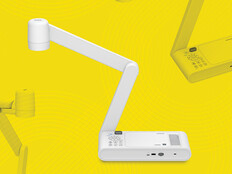EDUCAUSE Report: Students Benefit from Exposure to Emerging Tech
A new report from the EDUCAUSE Center for Analytics and Research found students benefit from exposure to emerging technology and encourages universities to work on expanding their programs.
"Increasing student access to 3D technologies … encourages student experimentation, provokes innovative interdisciplinary applications of these technologies and may support larger institutional XR goals and initiatives,” the report states. “Limited or no access to these expensive emerging technologies, especially based on student major, may exacerbate existing or produce patterns of digital exclusion among students at U.S. institutions.”
According to the report, nearly all students have access to technology like laptops, smartphones, tablets and desktops. While these tools have become more acceptable additions to the classroom — the number of professors who have banned laptops is down to 19 percent from 40 percent in 2017 — there are still issues that, if fixed, would be extremely beneficial for both universities and their students.
Encourage Use of Emerging Technology Through Public Spaces
Despite 96 percent of students reporting having access to some kind of personal device, only 4 percent of students have access to tools such as virtual reality and only 3 percent have access to 3D printers.
While the integration of mixed reality headsets and other emerging technology may be considered expensive, EDUCAUSE experts expect the demand for these technologies to only increase, and encourage universities to invest in emerging tools for public spaces like libraries, makerspaces, computer labs or active-learning facilities.
At the University of California, Irvine, administrators recently announced the construction of a new active learning pavilion, equipped with some of the latest technology, to encourage students to combine course material and creativity, the Center for Digital Education reports.
While the financial cost for this new technology is far higher than a room full of desktop computers, the investment is likely to pay off in the long run for student outcomes, according to EDUCAUSE.
“Increasing student access to 3D technologies in these ways encourages student experimentation, provokes innovative interdisciplinary applications of these technologies, and may support larger institutional XR goals and initiatives,” according to the report authors. “Limited or no access to these expensive, emerging technologies, especially based on student major, may exacerbate existing or produce new patterns of digital exclusion among students at U.S. institutions.”
MORE FROM EDTECH: See how universities can improve one-to-one device programs!
Universities Face Technology-Related Equity Issues
Classroom and campus equity has been a significant problem for some time, and administrators and professors have long tried to even the playing field for lower-income and minority students.
One of the most recent concerns for education equity is the digital divide — the separation of access to technology based on socioeconomic backgrounds. While the number of professors who ban laptops in their classrooms has lowered to less than 20 percent, mobile devices are banned by 52 percent of professors — which, according to EDUCAUSE researchers, is unevenly punitive to minority and disadvantaged students.
Research found students who were minorities, female, first-generation, from a disadvantaged socioeconomic background or who had disabilities placed a high importance on their personal devices.
“Given that these groups of students attach high levels of importance to these devices for their academic success, instructors should set aside their concerns about the use of such devices in class,” EDUCAUSE researchers explain.
Higher education institutions may also want to reexamine their investments regarding technology assistance for students with disabilities. In 2018, 27 percent of students reported their institution’s awareness of their needs as “poor,” up 16 percent since 2015.
Universities should also be investing in smart assistants like Amazon Alexa and Google Home to provide assistive technology for students with physical or learning disabilities.
“Accessibility should certainly be a campus-wide commitment,” EDUCAUSE researchers write. “IT can take these steps to be a strategic institutional partner in creating a more inclusive and supportive environment for students who have disabilities and learning differences.”









